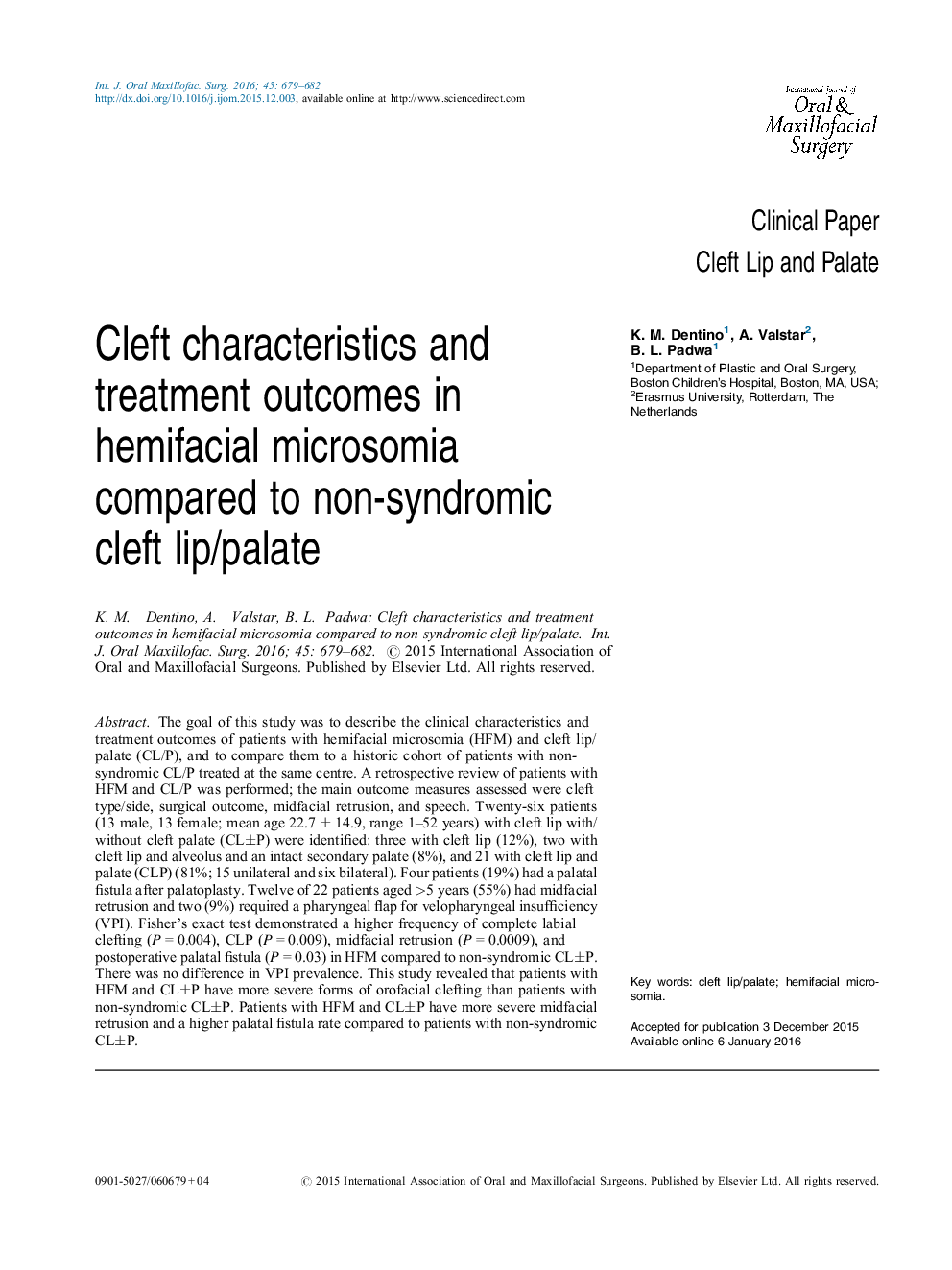| Article ID | Journal | Published Year | Pages | File Type |
|---|---|---|---|---|
| 3131765 | International Journal of Oral and Maxillofacial Surgery | 2016 | 4 Pages |
The goal of this study was to describe the clinical characteristics and treatment outcomes of patients with hemifacial microsomia (HFM) and cleft lip/palate (CL/P), and to compare them to a historic cohort of patients with non-syndromic CL/P treated at the same centre. A retrospective review of patients with HFM and CL/P was performed; the main outcome measures assessed were cleft type/side, surgical outcome, midfacial retrusion, and speech. Twenty-six patients (13 male, 13 female; mean age 22.7 ± 14.9, range 1–52 years) with cleft lip with/without cleft palate (CL±P) were identified: three with cleft lip (12%), two with cleft lip and alveolus and an intact secondary palate (8%), and 21 with cleft lip and palate (CLP) (81%; 15 unilateral and six bilateral). Four patients (19%) had a palatal fistula after palatoplasty. Twelve of 22 patients aged >5 years (55%) had midfacial retrusion and two (9%) required a pharyngeal flap for velopharyngeal insufficiency (VPI). Fisher's exact test demonstrated a higher frequency of complete labial clefting (P = 0.004), CLP (P = 0.009), midfacial retrusion (P = 0.0009), and postoperative palatal fistula (P = 0.03) in HFM compared to non-syndromic CL±P. There was no difference in VPI prevalence. This study revealed that patients with HFM and CL±P have more severe forms of orofacial clefting than patients with non-syndromic CL±P. Patients with HFM and CL±P have more severe midfacial retrusion and a higher palatal fistula rate compared to patients with non-syndromic CL±P.
